10 Spring Lawn Care Tips for Connecticut
BY KIMBERLY MAGERL | MAY 11TH, 2023 | CONNECTICUT, LAWN CAREThe praying mantis is the state insect of Connecticut. While not native to North America, this predatory relative of the cockroach is a symbol of the state’s natural beauty and its commitment to protecting its environment. Situated east of New York, Connecticut’s spring temperatures, ranging from 55 to 75 degrees Fahrenheit, bring praying mantises and residents outdoors. Execute our 10 spring lawn care tips and take advantage of the pleasant weather to prepare your yard for the dry summer just around the corner.
- Dethatch Warm-Season Turfgrass
- Aerate Warm-Season Grass
- Test Your Soil
- Mow More
- Water As Needed
- Control Weeds
- Perform Pest Control
- Identify and Treat Lawn Diseases
- Overseed Your Warm-Season Turfgrass
- Apply Fertilizer
What Are the Benefits of Spring Lawn Care?
Connecticut sits on the northernmost border of the transition zone. While cool-season grasses are best suited to the New England climate, warm-season Zoysiagrass varieties also grow well in their soils. Spring weather in Connecticut is unpredictable. There is usually snow or frost in March, and temperatures average 43 degrees Fahrenheit, gradually increasing to 75 by late May and setting off the active growing season for many Connecticut native plants.
Connecticuters care for their warm or cool-season grasses from March to May, hoping to encourage fresh growth before the dry heat takes over in the summer. Spring lawn care is more than mowing your lawn and setting the timer on your irrigation system. As your yard goes through its active growing season, you need to be on the lookout for diseases, pests, and bare spots. With the proper spring maintenance plan, your lawn will be ready to take on the Connecticut summer.
Spring lawn care benefits include:
- Increased drought resistance
- Healthy grass is 10 to 15 degrees cooler than concrete or asphalt
- Reduced air and noise pollution
10 Spring Lawn Care Tips for Connecticut
1. Dethatch Warm-Season Turfgrass
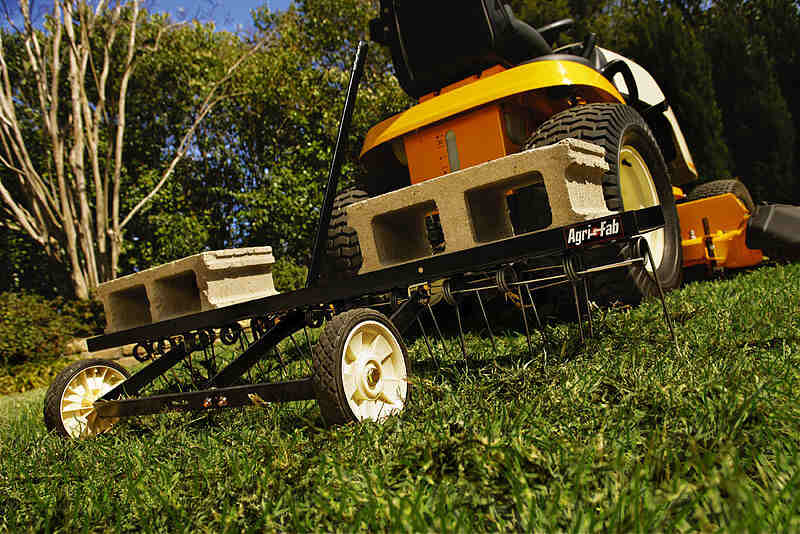
Photo Credit: Agri-Fab, Inc. / Wikimedia Commons / CC0 1.0
With an average snowfall of 37 inches, Connecticut winters are freezing and wet, causing warm-season grass cultivars and even some cool-season cultivars to go dormant and develop thatch. Thatch is the tight layer of dead grass intertwined with living grass blades and roots that accumulates just above your soil level and below eye line visibility. A thin layer of thatch insulates grass roots and makes your turfgrass more resilient, but too much of a good thing is a bad thing.
Dense thatch causes:
- Shallow root growth
- Pests and disease
- Increased moisture and humidity
- Restricted air, water, and nutrient penetration
Watch for thatch that is a half inch or more thick, spongy turf, footprints, increased pest activity, and active diseases. Aim to dethatch your lawn during its growing season using a dethatcher, also known as a lawn scarifier. Dethatchers work like a complex rake to remove thatch, bringing it to the surface of your lawn for collection. Always remove the loose layer of thatch immediately.
Connecticut warm-season grass cultivar, Zoysiagrass, grows in late spring and summer. Cool-season varieties such as Kentucky bluegrass, tall fescue, fine fescue, and perennial ryegrass hit their green-up phases in early spring and again in the fall. It is important to understand your grass variety. Dethatch your warm-season lawn in mid-spring to early summer and save your cool-season cultivar dethatching session for fall.
2. Aerate Warm-Season Grass
Connecticut receives around 45 inches of rain per year, well over the national average of 38 inches. Springtime is notoriously wet and unpredictable in the Nutmeg State with precipitation occurring in 31% of the days. Aeration is a common method to introduce oxygen back into struggling lawns with restricted root growth, allowing for water and nutrients to permeate more easily.
Oxygen allows your turfgrass to establish deep roots and a dense appearance. There are two types of common aeration: spike aeration and core aeration. Aim to aerate your New England lawn to stimulate root growth following your dethatching schedule: mid-spring to early summer for Zoysiagrass and early fall for cool-season varieties like Kentucky Bluegrass, fine fescue, tall fescue, and perennial ryegrass.
Core Aeration
Core aerators remove plugs of soil to create small holes so the soil can breathe. This method leaves leftover plugs of soil on the surface of your lawn, adding beneficial nutrients and microorganisms to decrease thatch naturally.
Core aeration is the best method for Connecticut’s soil varieties, including loose stones and gravel, rich saturated soils, alluvial sediments, disturbed loams, and gravelly sands. These acidic soils decrease nutrients, plant production, and water use and make soils more vulnerable to decline and erosion. Core aerators do a better job of breaking up sand or rock particles, creating airflow, and improving water and nutrient access.
Spike Aeration
Spike aerators create small holes in the ground with a rotating punch. This method does not remove material from the soil, so there is no chance of natural de-thatching.
3. Test Your Soil
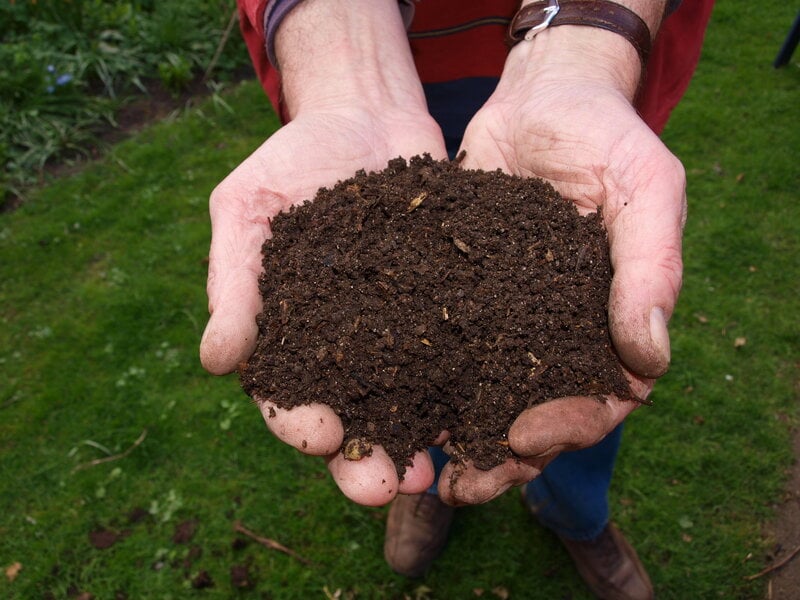
Photo Credit: PxFuel
Plants and turfgrasses growing in moist, acidic soil require regular fertilization. Spring soil preparation is crucial to the success of your Connecticut landscape. Proper preparation provides nutrients for your grass to thrive, even in the deficient soils of New England. Residents should send in a soil sample for testing in March or September.
Mail in a one-cup sample, collected and combined from different areas of your lawn, to receive your unique results detailing amendments you can make to improve your soil. Common amendments include lime for soil pH imbalances and nitrogen, potassium, and phosphorus applications.
4. Mow More
Tall grass blades develop deeper roots and a dense appearance. Healthy lawns resist insects, weeds, and diseases. Mowing is necessary for maintenance, but it stresses your turfgrass, leaving it more susceptible to pests, drought, and sunscald. Connecticut’s unpredictable, wet springs kick-start the active growing season for most plants and turfgrasses in mid to late March.
Your grass variety determines your unique mowing schedule and lawn height. To avoid injuring your lawn, never remove more than one-third of the leaf blade regardless of your cultivar. and always cut less, more often. You should mow weekly during the active growing season and aim to mow every two weeks during your turfgrass’ off-season.
Always mow within the recommended range for your grass type and leave clippings unless you see large clumps on your lawn.
| Grass Type | Recommended Mowing Height |
| Fine Fescue | 1.5 – 2.5 inches |
| Kentucky Bluegrass | 1.5 – 2.5 inches |
| Perennial Ryegrass | 1.5 – 2.5 inches |
| Tall Fescue | 2 – 3 inches |
| Zoysiagrass | 0.75 – 1.5 inches |
Warm-Season Grass
Zoysiagrass is a low-maintenance, warm-season cultivar that goes dormant during Connecticut’s winter months. Growth peaks in summer, but the active growing season begins in late spring. Aim to mow every seven to 10 days to maintain a mowing height between 0.75 to 1.5 inches and encourage deeper roots and a more dense and resilient turfgrass.
Cool-Season Grasses
Cool-season Connecticut turfgrasses include fine fescue, tall fescue, Kentucky bluegrass, and perennial ryegrass. Unlike Zoysiagrass, these cultivars remain green through most winter months but can go dormant during hot, dry months in the summer.
Active growth for cool-season varieties peaks in the early spring and fall. Mow cool-season grasses to their recommended heights every seven days during early spring. Aim to decrease mowing frequency to every 14 days in mid to late spring when growth has slowed.
5. Water As Needed
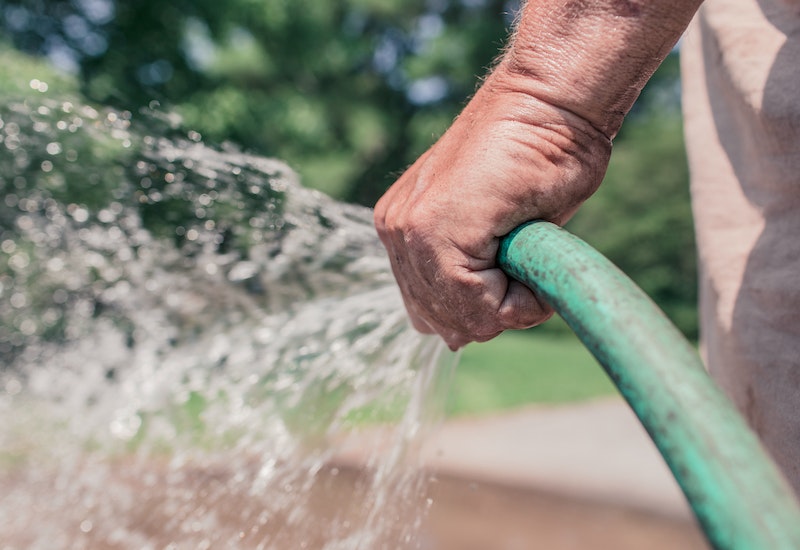
Photo Credit: Pexels
Unless your lawn is brand new, all grass varieties respond well to the typical conditions of a Connecticut spring. The best watering method for turfgrasses is as needed early in the morning, starting in May. It is true what they say about April showers bringing May flowers. April in the Nutmeg State is wet, typically providing more than enough precipitation for your plants and turfgrass.
You will know it is time to water your turfgrass when you notice a dark blue-gray color, footprinting, or wilted, folded, or curled leaves. Water all varieties twice per week, aiming for one-half inch of water per session to moisten the top 4 to 6 inches of soil and encourage deeper roots.
6. Control Weeds
Connecticut’s humid continental climate wouldn’t be complete without wet spring weather, creating the optimal habitat for plant growth, including weeds. Weeds signify an underlying problem with your lawn’s health and maintenance plan. They thrive in acidic, low-nitrogen soils, imbalanced pH, and thinning damaged turf.
Weeds steal nutrients, water, and sunlight from your grass and spread pests and diseases. The best control and prevention method is routine maintenance, coupled with supplemental chemical methods like post-emergent herbicides and pre-emergent herbicides.
Pre-Emergent Herbicides for Grassy Weeds
Pre-emergent herbicides minimize the number of weeds in your yard by killing seeds before germination. Apply pre-emergent herbicides in April before soil temperatures reach 55 degrees Fahrenheit to control grassy weeds.
A common method used by savvy Connecticuters is to watch for your neighborhood’s Forsythia to bloom. These shrubs are the first to bloom, signaling the arrival of spring and microbial activity in the soil. When you see the bright yellow blooms, it is time to put down your pre-emergent herbicide.
Look for solutions containing prodiamine, dithiopyr, benefin, or pendimethalin. Wait 30 to 60 days and apply a second application of pre-emergent herbicide in mid to late May or June.
Common grassy weeds in Connecticut include:
- Annual Bluegrass
- Crabgrass
- Dallisgrass
- Goosegrass
Post-Emergent Herbicides for Broadleaf Weeds
Post-emergent herbicides target annual and perennial broadleaf weeds, disrupting their growth. Use these herbicides year-round to target weeds you can see.
Do not use post-emergent herbicides if temperatures rise above 90 degrees Fahrenheit or fall below 40 degrees Fahrenheit or if your lawn is moisture stressed. Additionally, be sure to wait a few days after a fresh mow before applying chemical treatments.
Common perennial and annual broadleaf weeds include:
- Bull Thistle
- Dandelion
- Clover
- Creeping Charlie
- Plantain
7. Perform Pest Control
Different insects invade particular grass cultivars at different times. The most common Connecticut springtime pests include white grubs, sod webworms, armyworms, cutworms, and chinch bugs.
Armyworms and Cutworms
Armyworms and cutworms include the larvae and pupae of several species of nocturnal lawn-damaging moths. These insects cause significant spring damage. Watch for brown or yellow areas of dead grass that have been chewed to the ground. Patches appear and spread quickly, increasing the bird population in your yard.
Treat armyworms and cutworms with chemical insecticides containing pyrethroids or carbaryl. Prevent these devastating insects by avoiding overfertilization and maintaining your turfgrass.
Chinch Bugs
Chinch bugs affect any dense Connecticut turfgrass. Watch for yellow spots in sunny locations, signifying chinch bug activity. These foliage-seeking insects suck vital plant juices from your turfgrass until fall with peak activity beginning in May.
DIY collect chinch bugs using a coffee can with both ends removed to create a hollow pipe. Insert the can into the soil inside the affected area. Fill the can with water and leave it for a few days. Chinch bugs will float to the top of the can for removal. If you notice more than 15 chinch bugs per square foot, it is time to call a professional.
Sod Webworms
Like armyworms, sod webworms are the nocturnal larvae of lawn moths. These pests feed on grass blades and create tunnels just below your lawn’s surface. Sod webworms attack most grass cultivars, preferring fescues and Kentucky bluegrass. Watch for small brown spots of dead turfgrass that rapidly increase in size during dry spells. Treat sod webworms with an insecticide application containing bifenthrin.
White Grubs
White grubs are the larval form of several species of beetles, including Japanese and Scarab beetles. These small white pests feed on turfgrass roots. Keep an eye out for wilting, brown grass blades and an increased bird population.
Control white grubs with proper lawn maintenance, irrigation, and aeration. Treat the larval pests with chemical applications. For lawns with a history of white grub activity, apply chlorantraniliprole for prevention in May. For active infestations, use an insecticide designed for white grubs, but keep in mind these chemicals also harm beneficial insects like pollinators.
8. Identify and Treat Lawn Diseases
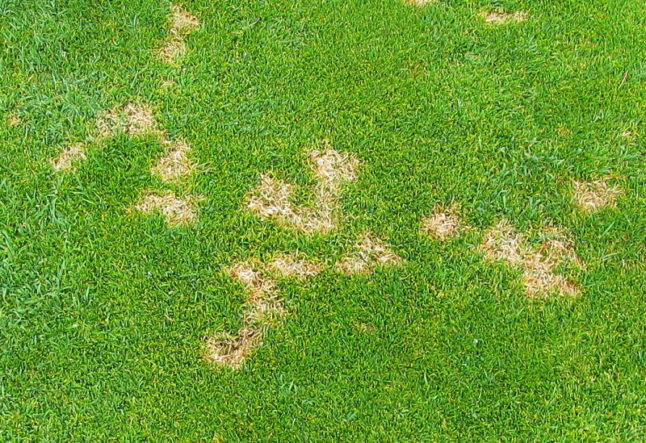
Dollar spot symptoms on creeping bentgrass
Photo credit: Glenobear | Wikimedia Commons | Public domain
Lawn diseases and fungi love Connecticut’s humid continental climate. The best defense against these lawn invaders is routine maintenance, watering, and fertilization for a healthy and dense lawn. Some of the most common diseases affecting the Constitution State’s turfgrasses are large patch, powdery mildew, dollar spot, rust, and snow mold.
Large Patch
Large patch is a fungus affecting many Connecticut turfgrasses, including ryegrass, tall fescue, and fine fescue. The fungus typically occurs in May and lasts through the end of summer in cool-season cultivars. Watch for brown, circular patches several feet in diameter.
Most large patch infestations do not respond to fungicide applications. The most effective control and prevention method is proper lawn maintenance. Improve drainage and air movement. Monitor patches and limit fertilization in affected areas. Avoid over-watering.
Dollar Spot
Dollar spot affects Kentucky bluegrass, ryegrass, and Zoysiagrass. It is caused by a fungus living in Connecticut soils. Watch for circular brown or yellow spots that look like dollar coins in spring through fall.
Like most fungi, treat dollar spot with proper lawn maintenance. Maintain nitrogen levels by applying a nitrogen-based fertilizer and minimize moisture stress by ensuring proper drainage. Always water deeply and infrequently in the early morning to reduce foliage wetness.
Powdery Mildew
Powdery mildew affects Kentucky bluegrass in the cool, wet months of early spring. This fungus produces a white or gray, powdery growth on grass blades. Watch for yellow areas of dying turfgrass.
Treat powdery mildew with proper lawn maintenance and fungicide applications. Remove thatch, avoid fertilization and post-emergent weed killers while the disease is active, and monitor and fix drainage issues. Avoid over-watering to prevent active and future infestations.
Rust
Rust is a tissue-dwelling fungus active in spring through fall. Be on the lookout for yellow flecks and raised areas on grass blades and thinning, wilting turf. Rust affects most Connecticut turfgrasses, including bluegrass, ryegrass, tall fescue, and Zoysiagrass.
Treat this turfgrass disease using a fungicide, and prevent the fungus with proper lawn maintenance. Improve drainage, reduce thatch buildup, and increase the time between irrigation sessions.
Snow Mold
Pink and gray snow molds are winter-dwelling fungi that attack Connecticut turfgrasses. They thrive under snow and during cold winter rains. Watch for irregular patches of dead, matted grass ranging from three to 12 inches in diameter in March after the frost and snow melt. Grass will take on a pink-to-white or gray-to-white color depending on the species of snow mold.
Treat snow mold by raking affected areas to remove matted grass and organic debris. Overseed the area to fill bare spots and stimulate growth. Prevent the disease by paying attention to the timing of your fall fertilizer application for your cool-season turfgrass. Always aim to fertilize earlier in the fall to avoid a late-season growth spurt which increases your lawn’s chance of developing snow mold.
9. Overseed Your Warm-Season Turfgrass
Spring is the best time to seed your warm-season lawn in Connecticut, while fall is the best time to seed cool-season cultivars. The active growing season encourages fresh growth, filling in thin and patchy areas.
Overseeding
Overseeding involves spreading new grass seed over existing turfgrass to fill thin areas. Zoysiagrass is a low-maintenance, warm-season cultivar that responds well to spring overseeding in bare areas.
Prepare to seed your Connecticut lawn in May by tilling patchy areas. Spread 0.5 to 1 pound of seed per 1,000 square feet.
Sod Plugs
Zoysiagrass also responds well to sod plugs. Plan to replant large bare areas using sod plugs in May. Space plugs 6 to 12 inches apart and water well daily. Keep crabgrass at bay by applying a root-safe pre-emergent herbicide.
10. Apply Fertilizer
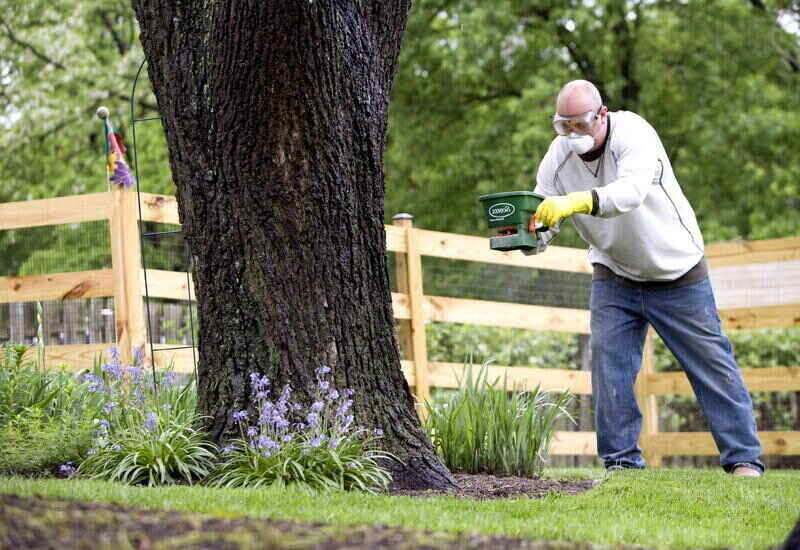
Photo credit: Pixnio
The best time to apply fertilizer to your Connecticut turfgrass is April or May, depending on your grass type. Fertilizer promotes healthy growth. The type of fertilizer for your lawn depends on your turfgrass cultivar and your unique soil sample analysis results.
Keep in mind that Connecticut soils are acidic, typically ranging from a pH of 4.8 to 5.5. These conditions make vital nutrients like phosphorus, nitrogen, and potassium less available to plants, making fertilizer applications important in New England states.
Fertilizer comprises three primary nutrients: nitrogen (N), phosphorus (P), and potassium (K). Labels have three numbers, such as 15-10-5, which means the fertilizer contains 15% nitrogen, 10% phosphorus, and 5% potassium. Select a fertilizer ratio to satisfy your soil test results.
Warm-Season Grasses
Zoysiagrass only needs one spring fertilizer application. Apply 1 pound of nitrogen per 1,000 square feet around April 15, but keep in mind that shaded grass requires less fertilizer than grass growing in full sun.
Cool-Season Grasses
Cool-season grasses like Kentucky bluegrass, fine fescue, tall fescue, and perennial ryegrass need two spring fertilizer applications to prepare the turfgrasses for the hot summer temperatures. Aim to apply 0.5 pounds of nitrogen per 1,000 square feet around April 15. Apply a second round of fertilizer around May 15.
FAQ About Spring Lawn Care in Connecticut
Use sprinklers or an automatic irrigation system to apply water in 10- to 20-minute segments, once per day, until the seeds have germinated. The germination process typically takes three weeks in Connecticut. Be sure to skip watering sessions if it rains.
Fertilize after overseeding your warm-season grass. Apply a slow-release fertilizer immediately after overseeding or wait two to three weeks and apply a fast-release fertilizer to your newly seeded lawn.
Spring weather in the Nutmeg State is unpredictable. It is typically wet, but even droughts have occurred. Generally, there is no need to supplement Mother Nature during Connecticut springs.
Overwatering your turfgrass stresses your lawn, leading to increased pests and diseases. Watch for these signs you are overwatering your turfgrass:
● Thick layer of thatch over ¾ inch thick
● Fungus growth including mushrooms
● Increased weed growth, including crabgrass and nutsedge
● Signs of pest activity
● Spongy grass and footprint indents
● Pooling water and increased runoff
Connecticut is a nature lover’s dream with its green hills, lush gardens, moist forests, cherry blossoms, and pristine beaches. With the proper spring lawn care schedule, you can get your lawn ready for summer and save yourself time so you can spend more of it outdoors.
If you need help identifying a pest or lawn disease, contact a Connecticut lawn care pro to help your landscape recover and establish deep roots.
Main Image Credit: Sphilbrick / Wikimedia Commons / CC BY-SA 3.0